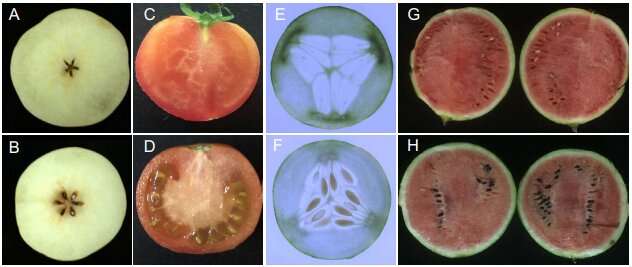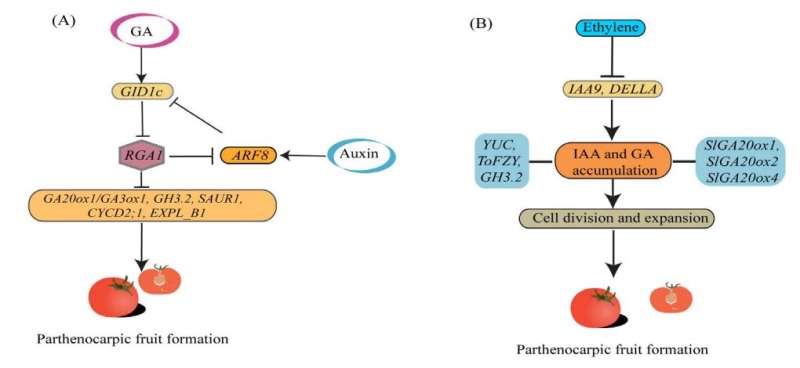#Clarifying hormonal interactions during parthenocarpic fruit formation in horticultural crops
Table of Contents
“Clarifying hormonal interactions during parthenocarpic fruit formation in horticultural crops”

Plant hormones are well known for their important roles in plant development, including fruit development, and many researchers have devoted significant effort towards understanding the relationship between plant hormones and parthenogenesis. What are the latest research advances in hormones and parthenogenesis? What are the molecular mechanisms that underlie parthenocarpic fruit formation, specifically the role of plant hormones? Until recently, a current summary of this information was lacking.
With this in mind, researchers from Yangzhou University have published the first review of research progress on the hormonal regulation of parthenogenesis in plants. The review first summarizes all the classes of hormones that are involved in the induction of parthenocarpy, including auxins (2,4 dichlorophenoxyacetic acid, naphthaleneacetic acid), cytokinins (forchlorfenuron, 6-benzylaminopurine), gibberellic acids, brassinosteroids, ethylene (1–methylcyclopropene), and melatonin (N-acetyl-5-methoxytryptamine).
Then, the molecular mechanisms of parthenocarpic fruit formation are presented, with a focus mainly on plant hormones. Auxins, gibberellic acids, and cytokinins are categorized as the primary players in the initiation of fruit set. Other hormones, such as ethylene, brassinosteroids, and melatonin, also participate in parthenocarpic fruit formation. In addition, synergistic and antagonistic crosstalk between these hormones is crucial for deciding the fate of fruit set.
Finally, researchers note that despite the wide range of available literature on hormones and parthenogenesis, some issues remain to be fully clarified. For example, functional studies are needed to characterize the mechanisms of CK-induced parthenocarpy. Exogenous CK and CK biosynthesis and signaling genes are positive regulators of parthenocarpy, but functional studies to clarify the detailed mechanisms are lacking. Similarly, despite the positive roles of BR and melatonin, the involvement of their biosynthesis and signaling genes in parthenocarpic fruit set has yet to be studied.

“The purpose of this review is to present updated information related to hormone-induced parthenocarpic fruit setting in different horticultural plants. Furthermore, the molecular understanding of hormone-mediated parthenocarpy is extensively discussed. Finally, we highlight knowledge gaps and suggest future directions in the field of parthenocarpic fruit formation research,” said the team of researchers from Yangzhou University.
The research was published in Horticulture Research.
Mutant tomato helps to crack the secrets of fruiting
Rahat Sharif et al, Hormonal interactions underlying parthenocarpic fruit formation in horticultural crops, Horticulture Research (2022). DOI: 10.1093/hr/uhab024
Provided by
Nanjing Agricultural University
Citation:
Clarifying hormonal interactions during parthenocarpic fruit formation in horticultural crops (2022, March 16)
retrieved 16 March 2022
from https://phys.org/news/2022-03-hormonal-interactions-parthenocarpic-fruit-formation.html
This document is subject to copyright. Apart from any fair dealing for the purpose of private study or research, no
part may be reproduced without the written permission. The content is provided for information purposes only.
If you liked the article, do not forget to share it with your friends. Follow us on Google News too, click on the star and choose us from your favorites.
For forums sites go to Forum.BuradaBiliyorum.Com
If you want to read more Like this articles, you can visit our Science category.




